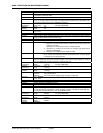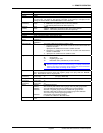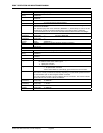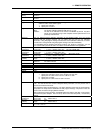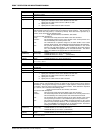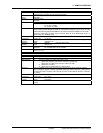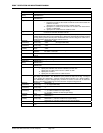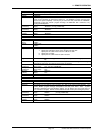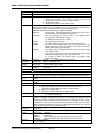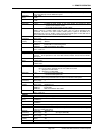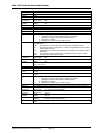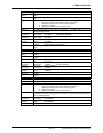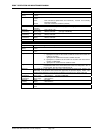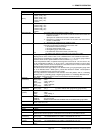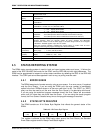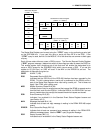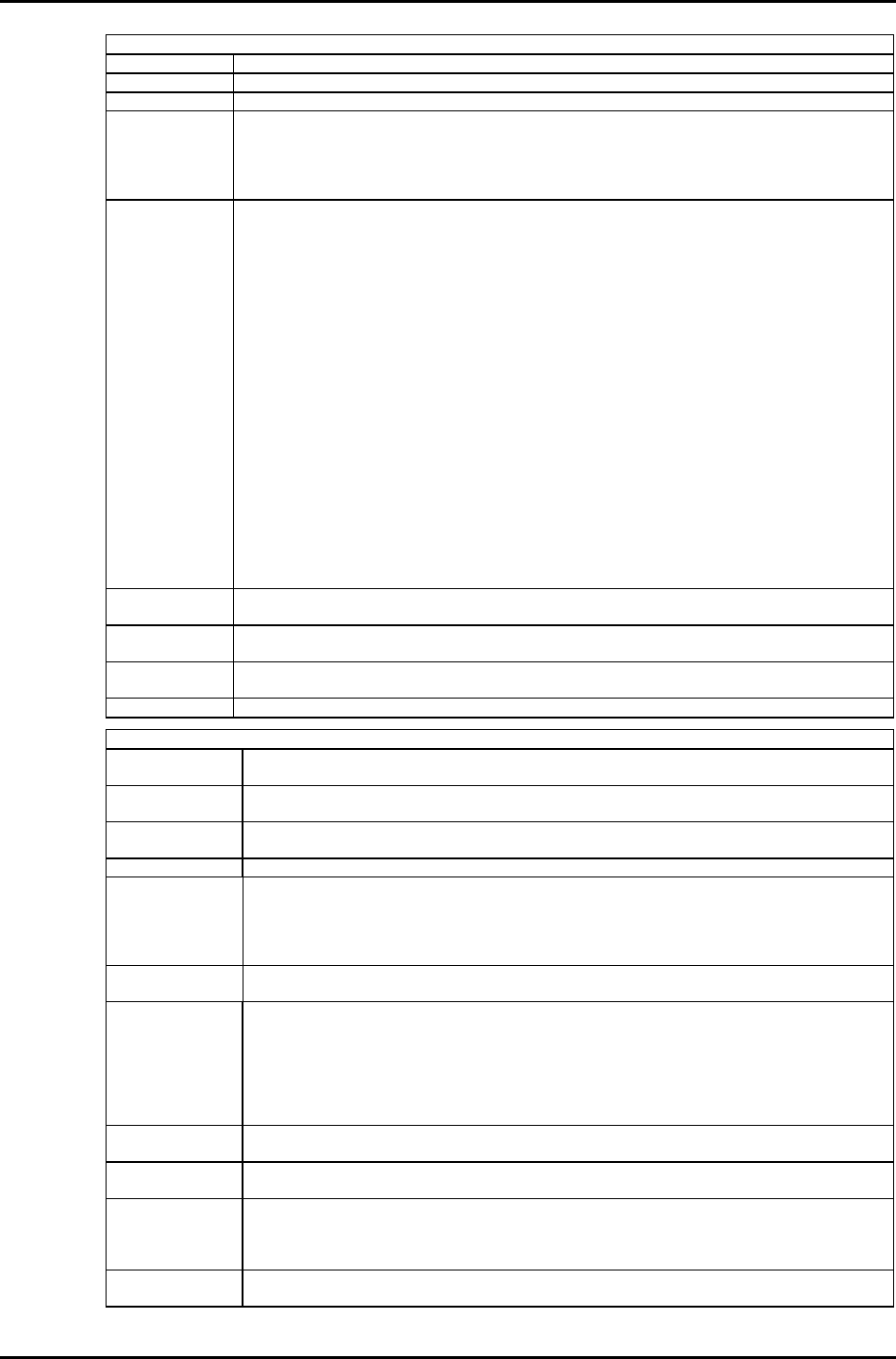
RPM4™ OPERATION AND MAINTENANCE MANUAL
© 2004-2007 DH Instruments, a Fluke Company Page 102
RPTn
Purpose Read the available Q-RPT identification data.
Query “RPTn”
Classic “RPTn”
Optional Suffix “n”
The active Q-RPT is assumed if no suffix is given.
‘1’ Specify the Hi Q-RPT if the Hi and Lo Q-RPTs are NOT OFF
Specify the HL Q-RPT if the Hi and Lo Q-RPTs are OFF
‘2’ Specify the Lo Q-RPT
‘3’ Specify the HL Q-RPT if the HL Q-RPT is active
Remarks Up to two (three including the HL Q-RPT which is a combination of the Hi and Lo) internal Q-
RPTs can be available for use in an RPM4. You can query the RPM4 for information about
each particular Q-RPT. The Q-RPT data is returned in the following format:
RPTLabel, Q-RPTLocator, Serial#, RngGa, RngAbs, Q-RPTMode
RngLabel: RPT type label. This label identifies the Q-RPT type and range. This is
the same label used on the RPM4 front panel screen.
RptLocator: Text field identifying the Q-RPT position in the RPM4 system.
“IH” identifies this as an internal, Hi Q-RPT
“IL” identifies this as an internal, Lo Q-RPT
Serial#: The serial number of the Q-RPT.
RngGa: The Q-RPT default gauge mode range in the current pressure unit.
RngAbs: The Q-RPT default absolute mode range in the current pressure unit.
“NONE” appears in the field if the Q-RPT is a Gxxx, BGxxx or Axxx with
absolute and negative gauge modes OFF.
RptMode: ‘A’ if Q-RPT is Axxx and supports absolute, gauge and negative gauge
measurement modes.
‘G’ if Q-RPT is gauge Gxxx or Axxx with absolute and negative gauge
modes OFF and supports only gauge measurement mode.
‘N’ if Q-RPT is BGxxx and supports gauge and negative gauge
measurement modes.
Example
(enhanced)
Cmd sent:
Query reply:
“RPT2?” (Get information on the Lo Q-RPT)
“A350K, IL, 82345, 35, 50,A”
Example
(classic)
Cmd sent:
Query reply:
“RPT3” (Get information on the HL Q-RPT)
“A7M, HL, 82345, 1000, 1000,A”
Errors ERR#4:
ERR# 10:
External device not detected.
Invalid suffix.
See Also 3.2.3, 3.2.4
SDSn
Purpose Read or set the OPEN/CLOSE status for the specified or active Q-RPT SDS systems. This
is equivalent to use of the SDS temporary OPEN/CLOSE function from the RPM4 front panel.
Command
Query
“SDSn close”
“SDSn”
Classic “SDSn=close”
“SDSn”
Default “SDSn=1”
Optional Suffi “n”
The active Q-RPT is assumed if no suffix is given.
‘1’ Specify the Hi Q-RPT’s SDS if the Hi and Lo Q-RPTs are NOT OFF
Specify the HL Q-RPT’s SDS if the Hi and Lo Q-RPTs are OFF
‘2’ Specify the Lo Q-RPT’s SDS.
‘3’ Specify the HL Q-RPT’s SDS if the HL Q-RPT is active
Arguments ”close”: ‘0’ to OPEN the SDS system.
‘1’ to CLOSE the SDS system.
Remarks Each Q-RPT of designation A7M or less can have an “SDS” system, which can be either
“OPEN” or “CLOSED”. This command allows access to each one without affecting the other,
regardless of whether the SDS for the selected Q-RPT is currently full time “ON” or “OFF”.
Caution must be used in differential mode or when using the HL Q-RPT, as this command
can allow you to have one Q-RPT open while the other Q-RPT is closed. If the “HL” Q-RPT
SDS is specified, then both the Hi and the Lo Q-RPT SDS will be affected. This command
does not affect the power up status of the SDS system.
Example
(enhanced)
Cmd sent:
Query reply:
“SDS2? 1” (close the Lo Q-RPT SDS)
“1”
Example
(classic)
Cmd sent:
Query reply:
“SDS1=0” (open the Hi Q-RPT SDS)
“SDS1=0”
Errors ERR# 7:
ERR# 10:
ERR# 23:
ERR# 53:
Argument not a ‘0’ or a ‘1’
Invalid suffix.
SDS not installed on this Q-RPT and pressure is close to ATM.
SDS not installed on this Q-RPT and pressure not close to ATM.
See Also “SDSAUTO”, “SDSACT”
3.2.7, 3.3.8, 3.5.4



